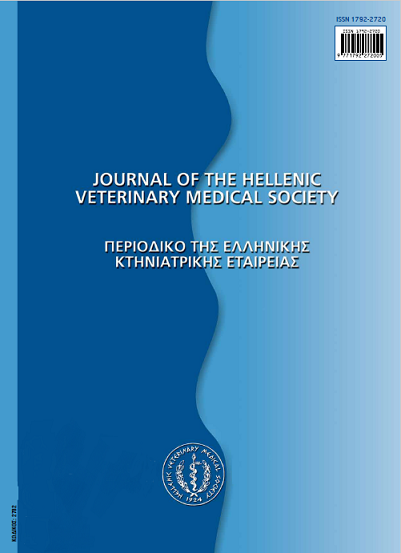Staphylococcus aureus and Staphylococcal enterotoxins in foodborne diseases
Abstract
Staphylococcal food poisoning (SFP) is one of the most significant foodborne diseases. It is a mild intoxication, which is caused by the ingestion of food containing one or more preformed staphylococcal enterotoxins (SEs). The toxic dose of SEs in human is usually ranged from 20 ng to 1 μg. SEs are proteins produced by Staphylococcus spp in various parts of the environment, including foods. Although several staphylococci can produce SEs, the majority of SFP cases is attributed to S. aureus. Traditionally, five antigenic SE types have been recognized: SEA, SEB, SEC, SED and SEE. During the 1990's, new SEs (SEG, SEH, SEI and SEJ) were reported and their genes were described. Several studies revealed that SEH, SEG and SEI were, also, involved in the gastroenteric syndrome. More recent data have indicated the presence of "new" SE genes and new SEs, designatedas "staphylococcal enterotoxin-like" (SEI). The role of SEI in food poisoning has not yet been clarified. In contrast to S. aureus,SEs are remarkably heat resistant (D-values of 3-8 min at 121 ° C). They may be present in foods even when viable cells of S. aureus are absent. The enterotoxins are, also, resistant to proteolytic enzymes. It is generally accepted that toxic levels of SEs are produced in foods when S. aureus concentration exceeds 105 cfu/ml. S. aureus can grow at a temperature range of 7-48.5°C, with optimum30-37°C, a pH range of 4.2-9.3, with optimum 7-7.5, minimum aw of 0.86, and up to 15% NaCl. SEs can be produced at a temperature range of 10-46 ° C, with optimum 40-45 ° C, a pH range of 4.8-9.0, with optimum 5.3-7.0, and aw range of 0.86-0.99,with optimum 0.90. Among the foods implicated in SFP are usually milk, dairy products and meat. SEA and SED are usuallyidentified in foodborne outbreaks, while SEC is an important cause of SFP associated with the consumption of dairy products.The European regulation has set criteria for presence of SEs in cheeses, milk powder and whey powder (Regulation EC, 2073/2005).If population of coagulase-positive staphylococci in samples exceeds 105 cfu/g, these samples should be further tested for thepresence of SEs. In this case, SEs must not be detected in 25 g of the products.
Article Details
- Come citare
-
PEXARA, A., BOURRIEL, A., & GOVARIS, A. (2018). Staphylococcus aureus and Staphylococcal enterotoxins in foodborne diseases. Journal of the Hellenic Veterinary Medical Society, 61(4), 316–322. https://doi.org/10.12681/jhvms.14904
- Fascicolo
- V. 61 N. 4 (2010)
- Sezione
- Review Articles

Questo lavoro è fornito con la licenza Creative Commons Attribuzione - Non commerciale 4.0 Internazionale.
Authors who publish with this journal agree to the following terms:
· Authors retain copyright and grant the journal right of first publication with the work simultaneously licensed under a Creative Commons Attribution Non-Commercial License that allows others to share the work with an acknowledgement of the work's authorship and initial publication in this journal.
· Authors are able to enter into separate, additional contractual arrangements for the non-exclusive distribution of the journal's published version of the work (e.g. post it to an institutional repository or publish it in a book), with an acknowledgement of its initial publication in this journal.
· Authors are permitted and encouraged to post their work online (preferably in institutional repositories or on their website) prior to and during the submission process, as it can lead to productive exchanges, as well as earlier and greater citation of published work.



